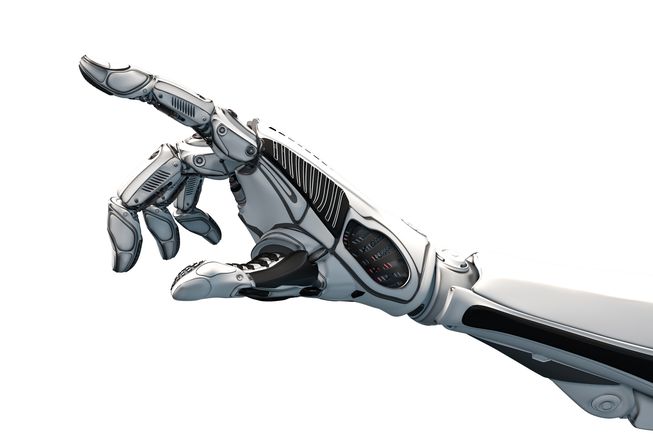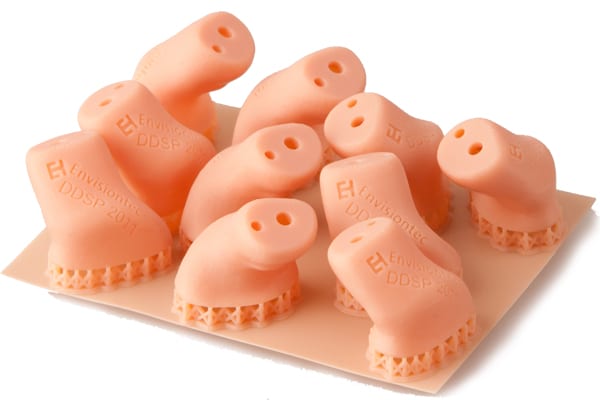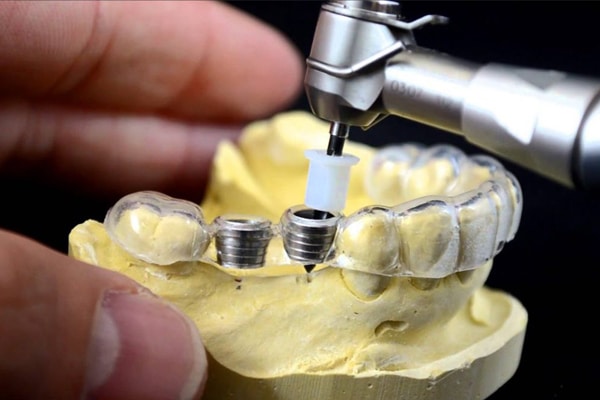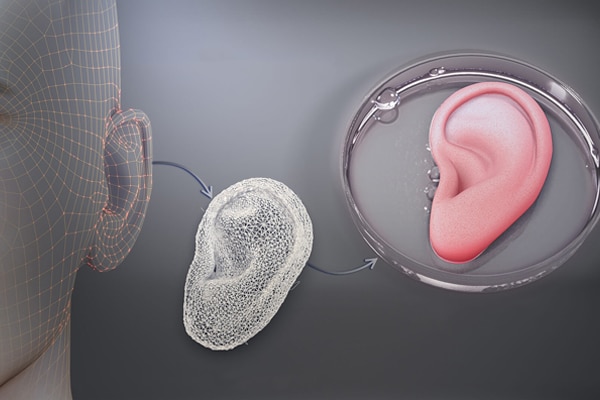Welcome to the future where disabilities are superpowers! The healthcare sector is being greatly benefitted by the 3D printing technology. 3D printing is growing and will cross the $3.89 billion mark by 2022. The healthcare sectors that are benefitted by the 3D printing technology are implants and drugs which are durable and reliable. 3D printing is offering medical expertise that was not available a few years ago. In the field of facial reconstruction or organ transplants like that of the heart, kidneys, liver, and ears, 3D printing plays an important part. For prosthetic parts like that of the hands and legs, this technology has made life sustainable for many people.
Many areas of the medical industry where complex problems are involved and their solutions are very difficult to achieve with the currently available technology, 3D printing stands a very big chance to offer solutions and that too at a very reasonable cost. This technology has already started making revolutionary changes in the manufacturing and surgical sectors. In the near future, the pharmacy and research segment will also see a radical shift in technology. The testing on animals will reduce significantly and there will be better treatment of the animals.
Customized and patient-specific drugs will see the light of the day. Drugs and medicines will be manufactured according to the specific needs of the individual patients. The accurate dosage, patient size, intensity of the disease will all be considered for making customized medicines for the patients.
A detailed report has been developed that outlines the advances in the medical sector and the growth of 3D printing in the various health segments like surgical, prosthetics, drugs, pharma, and research. The report also covers geographical areas where different advancements have been made in the 3D healthcare sector.
PROSTHETICS
3D Printing technology can add a lot of value and streamline the modern medical workflow. Adopting 3D technologies in pursuit of the “digital prosthesis” of the future can make prosthesis more affordable, customized and convenient for patients.
It could be argued that the most valuable possession to any human being is their body. Replacing a missing human limb, especially a hand, is a challenging task which makes one truly appreciate the complexity of the human body. For centuries innovators have been trying to replace lost limbs with manmade devices. Several prosthetic devices have been discovered from ancient civilisations around the world demonstrating the ongoing progress of prosthetic technology. Until recent times the design of prosthetic limbs has progressed relatively slowly. Early innovations such as the wooden leg can be thought of as simple prosthetic devices. History shows that for a long-time prosthesis have remained passive devices that offer little in terms of control and movement. Over time materials improved and designs started incorporating hinges and pulley systems. This led to simple mechanical body powered devices such as metal hooks which can open and close as a user bends their elbow for example.
3D Printing technology is now regularly being used to produce patient specific parts of prosthetics that match perfectly with the user’s requirement. The ability to produce complex geometries from a range of materials has resulted in AM being adapted at the locations where prosthetics are in contact with a patient. AM technology has been used to produce everything from prosthetic leg connections that fit comfortably onto a user through to a complex and highly customised facial prosthetic for a cancer patient.

HEARING AIDS
Much to many people’s surprise hearing aids are one of the greatest success stories to come from the continued development of Additive Manufacturing. Over 10,000,000 people are now wearing 3D printed hearing aids with 97% of all hearing aids globally now being created using Additive Manufacturing. Not only has AM technology significantly reduced the cost of custom hearing aids when compared to traditional manufacturing but the ability to produce the complex and organic surfaces required for a hearing aid has reduced returns because of bad fit from 40% to 10%.

Source: 3D Hubs
SURGICAL GUIDES AND TOOLS
Surgical Guide plays an important role in pre-surgical planning which then becomes simpler. Historically, surgical guides and tools were generic devices made of titanium or aluminum. It is used for the accurate placement of the implant in the bone structure. It replicates the exact surfaces of the patient’s intraoral situation and assists the surgeon to perform the clinical application of drilling implants into the bone with optimal accuracy. The correct angulations are builted into the guide and the exact length is known from the top of sleeve to the ape of the implant.

3D Bio-Printing
3D printing has been considered as a method of implanting stem cells capable of generating new tissues and organs in living humans. With their ability to transform into any other kind of cell in the human body, stem cells offer huge potential in 3D bioprinting. This Bio printing can be used in tissue engineering applications in which organs and body parts are built using inkjet techniques.

Source: G3D Press
If you wish to know more about 3D Printing please visit www.think3d.in